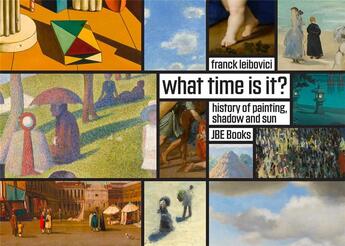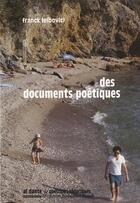-
Date de parution : 14/11/2022
-
Editeur :
Jbe Books
-
EAN : 9782365680707
-
Série :
(-)
-
Support :
Papier
Résumé:
A witty, ingenious, alternative history of art as a record of time.
«What is the purpose of the shadow in a painting, if not to indicate the time?» David Hockney once proposed. In this revelatory volume, poet and artist Franck Leibovici invites us to a journey into six centuries of Western... Voir plus
A witty, ingenious, alternative history of art as a record of time.
«What is the purpose of the shadow in a painting, if not to indicate the time?» David Hockney once proposed. In this revelatory volume, poet and artist Franck Leibovici invites us to a journey into six centuries of Western painting history through a simple question: "what time is it?" Relying on everyday knowledge, ancestral gestures and tools accessible to all (Google street view, suncalc.org) as well as osint (open source intelligence), Leibovici radically expands the metadata of iconic paintings by Breughel, De Chirico, Holbein, Lorrain, Manet, Monet, Renoir and more, offering us a refreshing approach to the history of art. Along the way, many small and unusual details, such as the Annunciation of the angel Gabriel to Mary a little too early, or the beginning of the moving image in painting, are revealed. Thanks to this book, we can finally know when exactly Jesus appeared to Mary Magdalene, Zeus abducted Europa or the emperor Titus conquered Jerusalem. Reproductions of each work discussed are accompanied by diagrammatic analyses of the painting.
French conceptual poet and multimedia artist Franck Leibovici (born 1975) has created performances, installations, essays, Panini albums, transcripts and spam correspondences. He works with the International Criminal Court in the Hague on using the strategies of poetry, the visual arts and the social sciences to expand the repertoire of tools for processing evidence. Leibovici is the author of Low Intensity Conflicts and De l'amour, among other publications.
Donner votre avis









